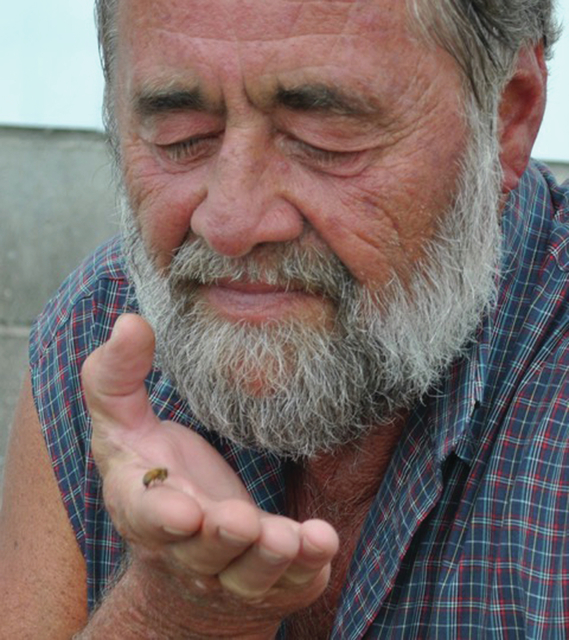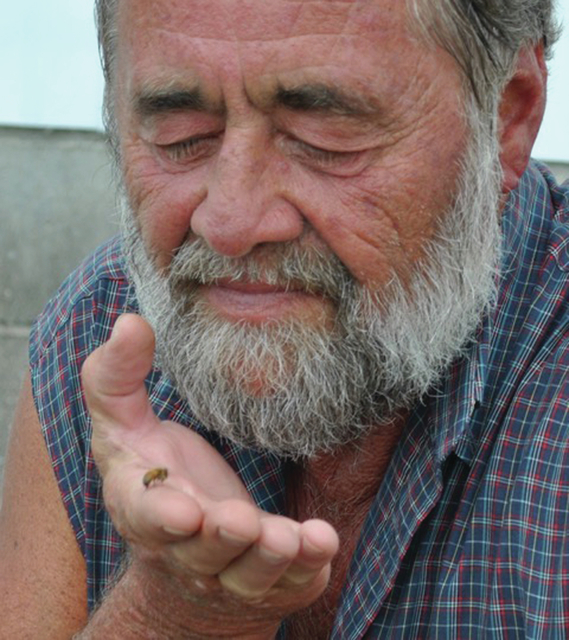

DARKE COUNTY – Steve Brumbaugh has been a beekeeper for 30 years, but he’s never seen anything like this.
Industrious Apis mellifera, an insect known to most as the humble honey bee, is responsible for pollinating crops ranging from apples to zucchini across the United States. Their collective worth as pollinators to American farmers is estimated to be upwards of $14 billion per year.
But those numbers are in very real trouble of taking a nosedive as for the the past 10 years honey bee populations all over North America – indeed all over the world – have plummeted with no readily apparent reason. Data shows that in 2014, Ohio beekeepers self-reported astounding losses of one-third to one-half of the total number of hives in the state. Other states are posting declines of up to 60 percent.
In his position as an apiarist for Darke County, Brumbaugh has reported years – all in the last decade – where local bee losses were around 80 percent, meaning that four out of five hives in Darke County simply packed up and left over the wintering months. With all of his experience and expertise, he has no explanation for the bees’ vanishing act.
“I wish someone would explain it to me,” Brumbaugh said. “I’m still trying to figure it out for myself.”
Whatever the cause – be it pathogens introduced into the hive by mites and other parasites, insecticides, climate change, or gamma rays from outer space – worker bees are going against millions of years of evolutionary programming and simply abandoning their hives.
While experts have yet to agree on what is causing the bees’ quixotic behavior, they know what is not causing the collapses. Brumbaugh said that if the bees were dying of disease, insecticides, or malnutrition, for example, the insects’ remains would be found strewn about the hives. But this is not the case. Brumbaugh will open a hive in spring only to find all the bees are gone. Not dead, but gone, leaving beekeepers like Brumbaugh shaking their heads with an empty hive on their hands.
The lack of bees and their pollenating skills has reached crisis levels in some farming areas, with the almond crops of California’s Imperial Valley being the best known and most publicized example. Almond trees are completely dependent on bees visiting and pollenating the spring flowers, so less bees means less almonds. As the Golden State’s bee populations have been decimated there as elsewhere, in recent years almond growers have been renting beehives from out of state, paying high premiums to beekeepers to ship in colonies of bees on flat-beds from as far as half a continent away to pollinate their crops. Truck farms in northwestern Ohio which are renowned for their seasonal crops – berries, apples, pears, cucumbers, and the like – have also had to import bees for pollination purposes.
Entomologists across the country are scrambling to find the reason for these colony collapses, but results so far have been less than encouraging. Researchers and educators shy away from the press-coined term Colony Collapse Disorder, or CCD, which was first used when bees started disappearing from hives just over 10 years ago. Denise Ellsworth, the Program Director of Honey Bee and Native Pollinator Education at OSU-Wooster, said that the term ‘CCD’ implies that there is but one cause for the bee disappearances, while the evidence to date points to a combination of factors.
“There is a complicated umbrella of multiple stressors on bees,” Ellsworth said. “We’re less looking for a silver bullet, and more looking at the whole complexity of what we need to do to keep bees healthy.”
Ellsworth and her colleagues have their work cut out for them. One recent study shows that there may be as many as 60 different factors contributing to the hive losses. With so many variables thrown into the mix, the process of nailing down a solution to the problem is proving to be painstakingly slow. Given the rate that colonies are disappearing, this is time the bees don’t have.
Researchers have long pointed an accusatory finger at the appropriately-named parasitic Varroa destructor mite, which preys exclusively on honey bees, as the primary cause for the bee colony collapses.
“The biggest stressor on honey bees are Varroa mites, so if beekeepers are not managing their Varroa mites, they are almost certain to lose their colony,” Ellsworth said.
But in yet another frustrating plot twist, keeping the parasites out of the hive is no guarantee that the bees will stay home.
“Even if you do manage the Varroas,” Ellsworth said, “you might still lose your bees.”
If there is any good news to be found here, it’s that staple crops such as corn, soybeans, and wheat are not dependent on bees, which limits the economic impact of the bee losses here in western Ohio. But that’s cold comfort for producers which count on the six-legged pollinators to grow their crops of apples, pumpkins, and berries, not forgetting beekeepers like Brumbaugh who pamper the insects for their honey.
“The smart guys need to figure this out,” Brumbaugh said. “And they need to do it fast.”





